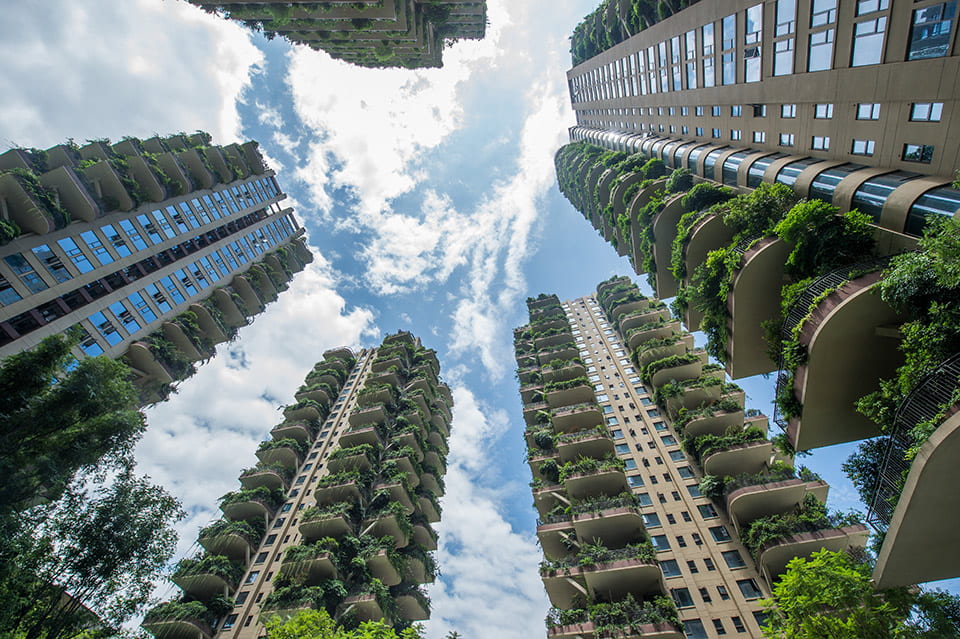How do you imagine a residential building?
Recently, a new idea on a residential building has not only been brought out but put into practice. This idea concludes:
The first generation of housing, built with thatched roofs, originated 10,000 years ago.
The second generation of housing, built with bricks, originated 3,000 years ago.
The third generation of housing, residentials with elevators, originated more than 100 years ago.
The fourth generation of housing, apartments with courtyards, innovation up to date. Such residential building has gardens on every floor, and every apartment has a courtyard. It is better than villas, more suitable for human living. But most people can afford and live in.
In Southwestern China, Chengdu already delivered a project of the fourth generation of housing, eight residential buildings with trees on each floor.

Glazer has pointed out, the Garden City was “conceived as an alternative to the city, and as a solution to city problems; this was, and is still. the foundation of its immense power as a planning idea.” And the idea of “the fourth generation of housing” is still built on how to solve city problems, merge gardens with cities.
As indicated in The Death and Life of Great American Cities, by Jane Jabcobs, the problem of great cities has been pictured as a city cannot resemble the English country town or the neighborhood of Walden. A poem, by the best-known idyllist in the history of Chinese poetry, who failed and backed from his career as a politician, becomes the most beautiful description of the ideal lifestyle for Chinese, “While picking asters neath the Eastern fence, my gaze upon the Southern mountain rests.” The imagination towards nature and our ancestors, cavemen, has been a core topic on how to develop a city suitable for living. It seems our living issues cannot be solved unless we go back to ancient times, where our ancestors lived for millions of years. However, cities are not only where we rest or sleep. Cities often deliver certain functions. Urban residents stand in the heart of cities, as we work and interact with other human beings to build and safeguard cities. This is the part I echo most in Introduction and Chapter One in The Death and Life of Great American Cities.
Cities are an ecosystem alongside economic, political, and cultural exchanges. We cannot discuss one function without referring to others, or simply put each for one area. They work together in the city ecosystem. Under the current context of city planning, buildings, the most visible part, are regarded as administrative achievements. The function to show off what a city could achieve outweighs how a resident could live happily.
Residents are always the most powerful as well as the most helpless in the cities. The residential building with trees on each floor arouses dislikes. Some exposed this building requests its residents never to seal their balconies out of the concern that sealing would damage the whole look of the building, while top floors suffer from windy days. Residents might not control where the city planning from top to bottom. They do have the choice not to buy such apartments.
Leave a Reply